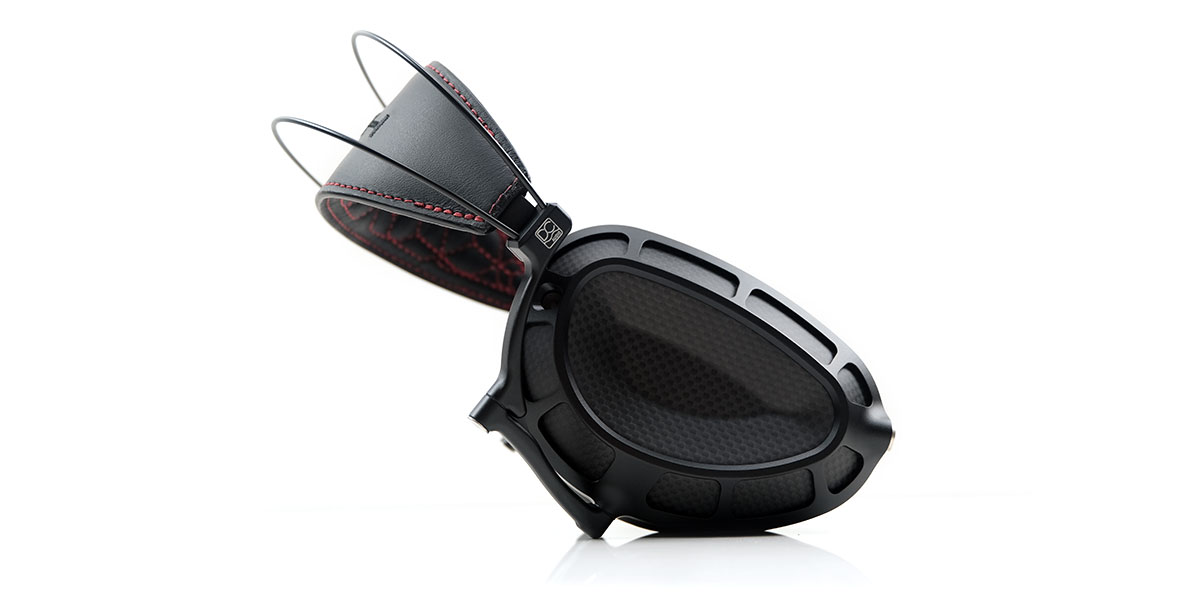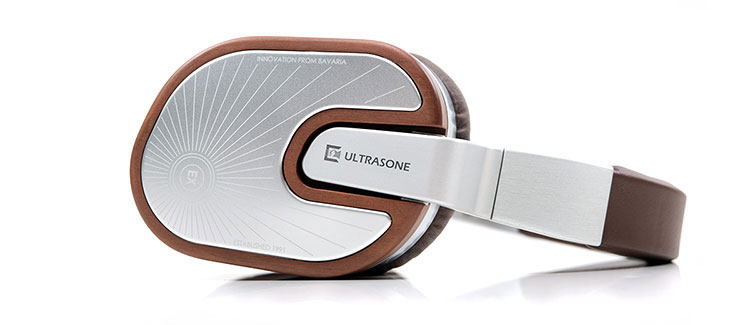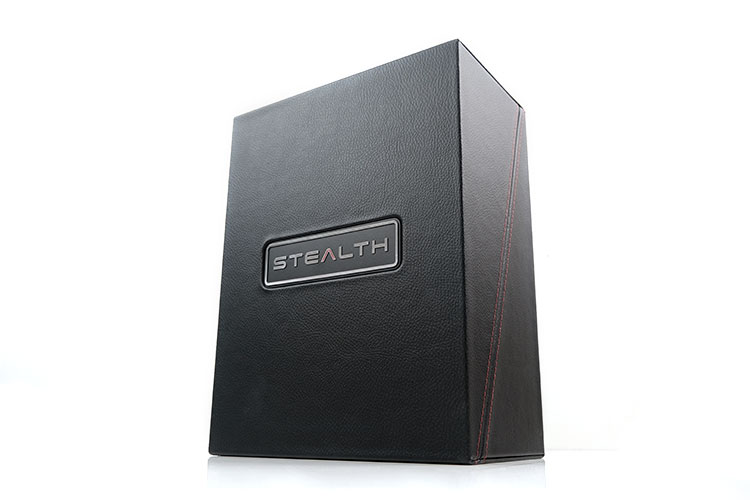Select Comparisons
Dan Clark Audio Ether C Flow
$1799
The Ether C Flow was the DCA flagship closed-back headphone for a number of years with the C Flow V.1.1 the last iteration we reviewed back in the MrSpeakers Era.
The Stealth does not actually replace the C Flow but rather assumes the mantle of the flagship Closed Back. The C Flow remains an integral part of the DCA lineup under the Ether Series.
It is important to note that this comparison was done with the Ether C Flow V1.1 without any additional tuning pads inserted.
Technical
Both the C Flow and the Stealth use V-Planar drivers, however, the C Flow uses the previous generation driver with TrueFlow 2 which is smaller by up to 20%. Additionally, although the C Flow is also a single-sided magnet build, it uses far fewer magnets per channel compared to the Stealth and is positioned inside the driver as opposed to outside on the Stealth.
Perhaps the biggest evolutionary upgrade is the AMTS system inside the Stealth. The C Flow, along with a great many other DCA headphones beforehand, was part of the tuning pad ecosystem, i.e. the small felt or foam pads that you inserted inside the pads to fine-tune the sound.
The C Flow V1.1 kit was probably the most extreme example of DCA post-production tuning with baffle vent stickers, paper decals, and earpad tuning pads. Using AMTS instead, that era seemingly has ended with the programmable waveguide and quarter-wave resonator functionality inside the Stealth.
In terms of efficiency, the C Flow V1.1 is rated at 23Ω and 92dB/mW SPL compared to the Stealth with a similar impedance rating of 22Ω but a lower sensitivity rating of a maximum of 87 dB. In our real-world testing using the Hugo TT2 and the Bakoon HPA-01, the C Flow V1.1 was the more sensitive of the two.
Design
Huge differences here and whilst I love the relatively lightweight design of the C Flow, the Stealth does feel like an upgrade both in terms of aesthetics and the quality of finishing.
First the shared features. Both use Nitinol headband rods, aluminum enclosures, pivots, and gimbals as well as those distinctive carbon fiber cups but even here they are applied very differently.
The Stealth rods are minus the adjusting blocks and with a wider-spaced aesthetic whereas the C Flow rods are closer and use the adjusting blocks. The C Flow also uses full arch gimbals and rounded carbon fiber convex cups consistent with the Ether range as the more traditional headphone shape.
The Stealth goes with the AEON teardrop form factor with elongated carbon cups, a more aggressive aluminum enclosure design, and the articulating half-gimbal system to allow it to fold into a very compact portable size. Despite the additional 30-40g weight, the Stealth feels the more manageable of the two headphones physically.
The Stealth wider strap and elastic adjustment system feel more natural and intuitive for my head compared to the physical adjustment blocks of the C Flow. The C Flow lambskin pads feel incredibly soft and isolate very nicely. However, to get that level of isolation they do clamp a little more than the Stealth which has more vertical pull than lateral.
Both headphones now come with the VIVO cable as stock with similar termination options. The Ether C Flow originally came with the DUMMER which is a step down from the VIVO in terms of performance for me.
Performance
The Stealth sounds ‘the bigger’ and more open of the two headphones with a blacker background. The Ether C Flow V1.1 is impressively balanced and performs very well indeed for a high-end closed-back headphone but it comes off as a little flatter or not quite as 3-dimensional and open as the Stealth.
There are a couple of areas that the Stealth really pulls ahead on including the sub-bass definition, improved low-end extension, and the more open and vibrant midrange presence.
The C Flow V1.1 has a solid fundamental but it’s comparatively neutral and does not extend as deep as the bigger Stealth driver. Subs-bass is there but not as elevated or as well-defined. When the bass goes really low the Stealth easily picks up on that additional rumble creating a deeper staging quality compared to the C Flow V1.1.
The second key area is the 1-5k range where it is a little more uneven on the C Flow V1.1 compared to the Stealth’s smoother Harman-type curve. The Flow has more of a dip, which, whilst not recessing vocals does give them a more neutral imaging quality compared to the more focused sound of the Stealth.
Despite being more forward, the Stealth vocal and percussion quality is neither splashy nor shouty. It still sounds very natural but does have a more vibrant quality with better spatial cue detection coming from a stronger staging width.
I suspect the better treble presence and resolution from the Stealth treble are playing a role here. I do find the C Flow V1.1 timbre to be quite smooth but I am also hearing less information above 6-7k with a comparative roll-off in upper treble presence compared to the Stealth.
HIFIMAN HE-R10P
$5499
The HE-R10P is HIFIMAN’s flagship closed-back planar magnetic headphone and a hefty $1500 more expensive than the Stealth. We reviewed this earlier in 2021 and whilst it is one of the best sounding closed-backs, as it should be for the price, it is not without some ‘quibbles’.
Technical
Although there is no direct driver size comparison, both the Stealth and the HE-R10P place an emphasis on reducing diaphragm thickness on their drivers but in a different manner.
The R10P works the NSD or NEO ‘supernano’ design pitch on the diaphragm itself to create a light, low-mass build with an emphasis on speed or a very tight response. The Stealth’s 4th gen V-Planar driver is also pitched as the company’s thinnest to date but the measurement of a few mm thick includes the magnets also.
On the subject of magnets, the R10P takes the more traditional double-sided magnet implementation inside the driver whereas the Stealth is single-sided but loads up on the magnet count at 30 per channel and locates them outside the driver.
Perhaps the crux of the differences between these two on the technical side is how they manage their acoustic space with the Stealth AMTS vs the R10P’s stealth asymmetrical magnet and large acoustic chamber configuration.
Both approaches have a core application of controlling sound waves to reduce diffraction and distortion. However, the Stealth’s smaller enclosure is heavily damped with more emphasis on the ‘ramped’ programmable AMTS waveguide controlling high-frequency standing waves and resonance and that final sound to the ear.
The R10P brings in that unique large cup design and sizeable acoustic chamber which is a fixed approach to reduce closed-back design issues such as reverb and unnatural echoes and give the drivers plenty of space to breathe.
In terms of efficiency, the R10P is rated at 30Ω and 100dB SPL compared to the Stealth’s 22Ω and 87dB so, of the two, it will be much easier to drive but both benefit from good amplification.
Design
Despite the use of attractive cherry wood enclosures with a fine grain and a natural non-gloss finish, the HE-R10P suffers a little from the Sony R10 form factor similarity and some materials selection that does not feel overly high-end. The Stealth material section has more of a premium feel with a form factor that also looks a lot more modern.
Some examples of that finishing include the R10P plastic hollow pivot blocks where the headband joins the gimbal, a design cue from their entry-level Deva. The headband itself is not that different from the Deva either with its narrower contact surface area though the excellent memory foam depth keeps the comfort levels high.
Both are indeed comfortable on the head and do very well in terms of weight control with the R10P at 460g and the Stealth coming in a little lighter at 415g. However, I feel the Stealth’s pressure distribution and longer cup design do better in terms of keeping a secure position during head movement.
It also seems that the round hybrid pads on the R10P isolate a bit less despite the fact that Stealth’s elongated pads are also a hybrid design. It may well be that Stealth’s vegan suede is a denser fabric compared to the polyester of the R10P.
Performance
On a macro level, the R10p soundstage size is ‘arena’ level for a closed-back headphone, even the Stealth doesn’t sound as cavernous. However, I think the Stealth does a bit better in terms of image placement and vividness and when you listen carefully, it does seem to have a more even treble tuning.
That vividness also comes from the midrange placement and contrasting coloration. The R10P midrange peaks a bit earlier at 1-2k whereas the Stealth runs with a steady 1-5k climb peaking more in the upper mids. The Stealth percussion and higher pitching vocals sound forward and cleaner whereas the R10P fades off that area to get a smoother warmer coloration.
The net effect is that your listening attention is brought a little further down on the R10P to the bass and lower mids which are smoother and richer. The Stealth keeps your ear more firmly on the mids to upper mids so whilst male vocals sound fuller on the R10P, falsetto or head voices sound clearer and more vibrant on the Stealth.
Both headphones place less emphasis on mid-bass punch and instead focus on excellent sub-bass extension. However, they do differ in their coloration and quantity slightly.
You can easily pick up on both headphones’ respective sub-bass rumble but the R10P has less of an upper bass dip and separation from the lower mids. It sounds more voluptuous and warmer than the Stealth’s bass tuning, more of an enveloping deep and wide-sounding rumble.
The Stealth is tighter for me, slightly cooler in the timbre with less elevation into the mid-bass and upper mids. You get more sub-bass separation and a cleaner impact on bass notes so whilst not as voluminous, notes are less rounded with a more distinct odd-harmonic overtone.
Ultrasone Edition 15 Veritas
$3499
The Edition 15 Veritas is Ultrasone’s flagship closed-back headphones and one we positively reviewed towards the end of last year.
Technical
The contrast here is dynamic driver versus planar with both companies bringing their unique engineering patents to the table. DCA with its V-Planar driver technology combined with the new AMTS programmable waveguide sub-system and Ultrasone with its 40mm GTS dynamic driver and patented S-LogicEX® decentralized positioning of the driver.
You could argue though that S-LogicEX and AMTS are trying to achieve some similar goals with both trying to adjust your perception of the staging properties of each headphone’s performance.
For example, the AMTS’s waveguide implementation has a specific remit to fine-tune the HF response, create as little unwanted reflection as possible, and bring down the listener’s perspective from way high to something more natural or at ‘head height’.
S-LogicEX® is based on a funnel-shaped sound driver arrangement, oriented downwards to the front. This allows for more distance between the driver and ear to create a stronger spatial perception of voices and instruments.
In terms of efficiency, both headphones are not hugely sensitive with the Stealth less so at 87dB SPL and the Veritas at 94 dB. Impedance is more critical for the Veritas but its demands are relatively light at 40Ω and the Stealth at 22Ω.
Design
Both these headphones have gorgeous aesthetics with the Veritas’s mix of American cherry wood cups, stainless steel plates, and Merino leather pads a stark contrast to the sleeker carbon fiber plates, teardrop cups, and the black and red trim of the Stealth.
However, the Veritas does have that natural dynamic driver lightweight advantage over the magnet-laden Stealth weighing in at 320g compared to 415g. The Veritas is also a smaller headphone at full stretch and has all the look of a portable headphone closer to the AEON series dimensions despite being officially a circumaural fit.
The Stealth, however, has that folding gimbal system that can shrink the carrying form factor even further. It is a pity Ultrasone never saw fit to include a more portable carry case given the Veritas size, something which feels entirely apt with the Stealth’s compact carry case.
Despite the Veritas being lighter, it relies a lot more on lateral clamping pressure making it less comfortable to wear compared to the Stealth. The Veritas does achieve better passive isolation but the methodology to achieve it combined with a stiffer pad with a narrower contact surface makes it more fatiguing compared to the softer Stealth pads.
I am also a little less fussed about the two 2-pin LEMO push-pull connector 4-wire SE cables with the Veritas. They are lighter than the VIVO and do provide some excellent portable audio capability but they are also a bit more microphonic above the splitter with no balanced termination option.
Performance
The Edition 15 Veritas subjectively sounds almost like the inverse of the Stealth tuning save for a 2-3k bump for vocal clarity. The Veritas delivers like a classic closed-cup headphone with a meaty close-sounding bass presence, secondary midrange imaging, and a bump at 8-10k but still not a huge amount of headroom.
The Stealth, on the other hand, has a linear bass response with its weighting more sub-bass than mid and upper. The damping is better here with much greater control over potential reverb and less amplitude on the mid and upper bass. This is not a punchy bass tuning but the resolution and layering are more detailed and accurate.
The Veritas does have an enjoyably smooth and textured delivery for standalone vocals. However, it’s an intimate tuning and a bit notchy around the vocals with dips around 2k and 4k. That clears a narrow path for vocal presence but with less air and openness around them.
The Stealth has a more even response curve from 1-5k, with a natural-sounding harmonic balance to vocals and instruments. The lack of upper-bass bloat offers plenty of space for the mids ensuring they sound clear and articulate.
Staging is vastly more open-sounding on the Stealth but even with that statement, the balance and accuracy of the imaging are more believable compared to the Veritas. The Veritas is all about a forward mid-bass punch, strong lower-mids presence, dipped mids, and a moderate treble positioning. It works well for an intimate setting.
The Stealth can handle a lot more staging complexity with better depth and a more open slightly mid-forward sound as well as improved separation. You never feel like you are hitting the same kind of closed-back wall as you do with the more intimate Veritas.
Our Verdict
Closed-back planar headphones have been often seen as the black sheep in any company’s product lineup. Few do and few do them well with the resulting niche category being subsequently applied. The Stealth breaks that mold and then some.
However, it is just not the technical innovation inside the Stealth to create one of the most open-sounding closed-back but also the tuning that makes it one of the most accessible.
The detail is very much there but it is delivered in a very natural manner that makes this a very enjoyable listen. Given how hard it is to tune closed-backs to get an accurate and pleasing tonal character that should be taken as a bit of a home run from the DCA team.
Also, the aesthetics are great, the materials used are thoughtful and the comfort/isolation is excellent. You do need a quality amplifier to get the most out of the Stealth but I suspect those who are willing to shell out 4G’s for it will already have something a bit special to pair with it.
Dan Clark Audio Stealth Specifications
- Weight: 415grams
- Impedance: 23 ohm
- Sensitivity: Approximately 86 – 87 dB/mW
- Driver: 72mm x 50mm single-sided planar magnetic
- Driver matching: 0.25db weighted 20-10,000Hz






